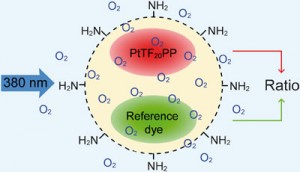This month sees the following articles in Chemical Science that are in the top ten most accessed:-
Why not take a look at the articles today and blog your thoughts and comments below.
A general approach to the enantioselective a-oxidation of aldehydes via synergistic catalysis
Scott P. Simonovich, Jeffrey F. Van Humbeck and David W. C. MacMillan
Chem. Sci., 2011, Advance Article, DOI: 10.1039/C1SC00556A
A robust and scalable synthesis of the potent neuroprotective agent (-)-huperzine A
Maung Kyaw Moe Tun, Daniel-Joachim Wüstmann and Seth B. Herzon
Chem. Sci., 2011, Advance Article, DOI: 10.1039/C1SC00455G
Palladium(0)-catalyzed cyclopropane C–H bond functionalization: synthesis of quinoline and tetrahydroquinoline derivatives
Sophie Rousseaux, Benoît Liégault and Keith Fagnou
Chem. Sci., 2011, Advance Article, DOI: 10.1039/C1SC00458A
Asymmetric synthesis of highly functionalized cyclopentanes by a rhodium- and scandium-catalyzed five-step domino sequence
Brendan T. Parr, Zhanjie Li and Huw M. L. Davies
Chem. Sci., 2011, Advance Article, DOI: 10.1039/C1SC00434D
Use of precatalysts greatly facilitate palladium-catalyzed alkynylations in batch and continuous-flow conditions
Wei Shu and Stephen L. Buchwald
Chem. Sci., 2011, Advance Article, DOI: 10.1039/C1SC00409C
Asymmetric dearomatization of pyrroles via Ir-catalyzed allylic substitution reaction: enantioselective synthesis of spiro-2H-pyrroles
Chun-Xiang Zhuo, Wen-Bo Liu, Qing-Feng Wu and Shu-Li You
Chem. Sci., 2011, Advance Article, DOI: 10.1039/C1SC00517K
Tracking gold acetylides in gold(i)-catalyzed cycloisomerization reactions of enynes
Antoine Simonneau, Florian Jaroschik, Denis Lesage, Magdalena Karanik, Régis Guillot, Max Malacria, Jean-Claude Tabet, Jean-Philippe Goddard, Louis Fensterbank, Vincent Gandon and Yves Gimbert
Chem. Sci., 2011, Advance Article, DOI: 10.1039/C1SC00478F
Enantioselective rhodium-catalyzed arylation of electron-deficient alkenylarenes
Aakarsh Saxena and Hon Wai Lam
Chem. Sci., 2011, Advance Article, DOI: 10.1039/C1SC00521A
Reactivity of NHC Au(i)–C s-bonds with electrophiles. An investigation of their possible involvement in catalytic C–C bond formation
Magnus T. Johnson, J. Marthinus Janse van Rensburg, Martin Axelsson, Mårten S. G. Ahlquist and Ola F. Wendt
Chem. Sci., 2011, Advance Article, DOI: 10.1039/C1SC00428J
Nickel-catalyzed cross coupling of non-activated alkyl halides: a mechanistic perspective
Xile Hu
Chem. Sci., 2011, 2, 1867-1886, DOI: 10.1039/C1SC00368B
Fancy submitting an article to Chemical Science? Then why not submit to us today or alternatively contact us your suggestions.












